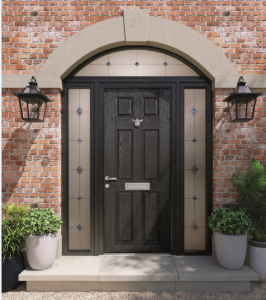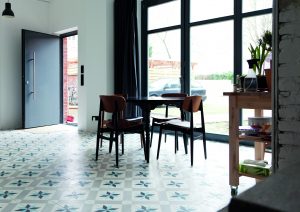With the firm’s marketing now firmly focused on digital channels, composite door manufacturer Apeer decided to take a closer look at who is enquiring about their products. The results were quite surprising
Around three years ago Apeer made the fundamental decision to switch their marketing activity from attending a punishing schedule of a dozen or more home improvement shows throughout Britain and Ireland each year, to a predominantly social media outreach that uses increasingly sophisticated techniques to reach a door buying audience.
 From days spent in exhibition halls around the British Isles, pressing the flesh (remember when we could do that?) of mostly tyre-kicking day trippers, the task for the Apeer team now is to filter and follow up more than 1,000 leads a week from an incredibly broad range of enquirers. An experience, says the company’s Marketing Manager Linda Tomb, that has provided some enlightening and often surprising insights into the preferences of its customers.
From days spent in exhibition halls around the British Isles, pressing the flesh (remember when we could do that?) of mostly tyre-kicking day trippers, the task for the Apeer team now is to filter and follow up more than 1,000 leads a week from an incredibly broad range of enquirers. An experience, says the company’s Marketing Manager Linda Tomb, that has provided some enlightening and often surprising insights into the preferences of its customers.
“The road shows were absolutely exhausting, and I can’t pretend that I miss them,” admitted Linda. “And actually whilst it was good to meet people face-to-face – mostly anyway – the irony is that we never really learned much about them. Using social media, whilst we never meet our homeowner buyers face to face any more, we know so much more about them!” she explained.
There have always been assumptions about the buying processes of home improvers,” says Linda, “many of which were true when manning exhibitions stands at ‘Ideal Homes’ shows. By this I mean the number of couples, aged 45 to 55 for example, with the wife doing most of the talking, but including her husband when the discussions turned to money.”
Explaining some of the exhaustive customer analysis that Apeer’s social media-based marketing has now assembled, Linda said: “We actually receive far more enquiries for Apeer composite doors from women than men, whilst the reverse is true for our Lumi window brand. Our assumption is that men are more likely to be involved when the purchase is potentially of much higher value and when the specification is more complex. That might sound patronising but it’s what our analyses suggests.”

Many of the standard, perhaps cliched assumptions, have been overturned however: “We previously assumed that buyers in the age group 25-35 were less likely to purchase as many would not be on the property ladder yet, either still living with mum and dad, or renting and saving. In fact, this preconception was overturned when we launched products such as our Golden Pink and other similarly themed colour schemes, especially in pastel colours. These themes were quite an experiment by the industry last year. We were able to match the cassettes with side and top lights through our in-house glass studio,” explained Linda, “and we enjoyed some impressive sales. Unsurprisingly we received more enquiries from women; but the pleasant surprise was that most were professionals and business owners in the 25-35 age group.”
Other biases might be predictable: Men, in the age group 35-45, are more likely to choose Apeer’s ‘Silka’ door for example, an upmarket style that has been a great success with homeowners looking to complement installations of aluminium windows: “Perhaps that is because the lines might be described as more ‘architectural’,” said Linda, “more masculine, although that was not the intention when we designed the door.”
Nonetheless, 70% of the visitors to the Apeer Doorbuilder that arrive through social media, are women: ‘Overall they display a far greater interest in contemporary styles – which counters the unusually loaded response we receive for Silka – and they prefer pastel colours, which is perhaps not surprising. Men almost always choose stronger, solid colours, such as dark blues and black, even reds, burgundies,” Linda said.

Such is the power of the data received and analysed by Apeer, that the company can now design products with specific attributes and promote that product through specific channels, knowing the type of customer they are likely to attract. “This gives us real power to analyse and respond to market preferences that increasingly remove speculation and therefore chance, when producing new products,” said Linda. “This will dramatically improve the opportunity to get it right as close to first time as possible.
“However, as a company we have a reputation for being a little more adventurous than most; this will allow us to be even more daring, to carry out some precision test marketing, stepping up production for those things that work; and of course, quickly scrapping things that don’t,” she concluded.
Back to Features Next Feature
